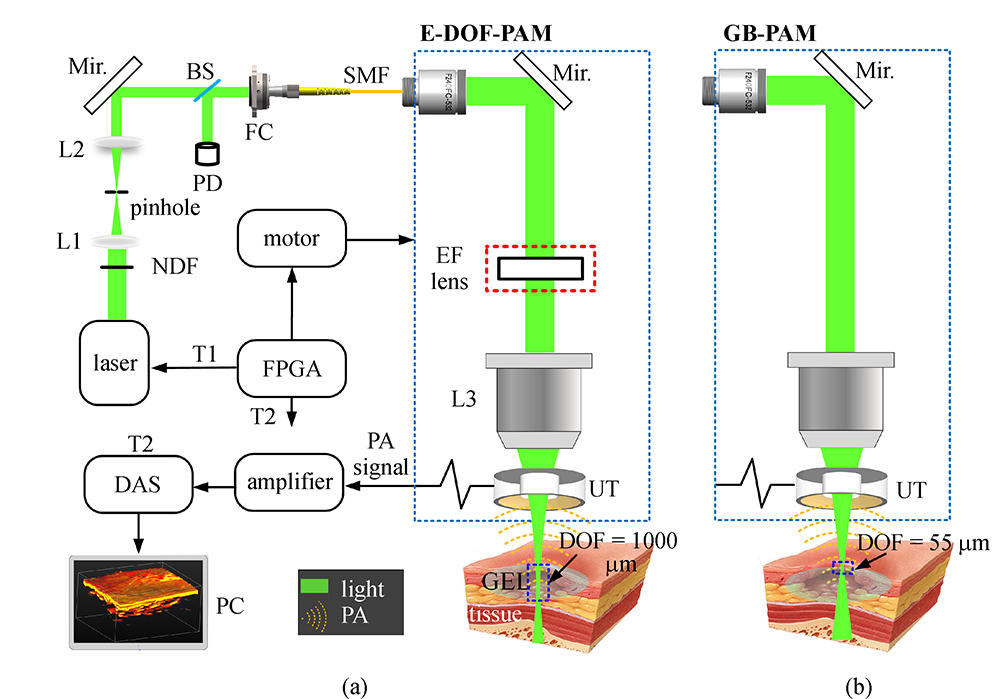Skin trauma occurs for many different reasons, including incisions, blunt force, and burns [
1]. Chronic wounds, including diabetic, venous, and pressure ulcers, impose a significant healthcare burden worldwide [
2]. Faster and better wound healing is a longstanding goal [
3]. Accurate early assessment and postoperative monitoring are very important for establishing an appropriate treatment plan. Accurate early assessment can distinguish normal tissue from necrotic tissue, assist doctors in determining whether tissue removal and skin grafts are needed, and reduce waiting times [
4]. The real-time postoperative monitoring of trauma sites can allow timely feedback of the effect of treatment and help doctors adjust treatment plans as soon as possible. Scars are the inevitable outcome of wound healing. Typically, visual observations and surface measurements have been used to evaluate wound healing by monitoring wound size, color, odor, drainage, and eschar [
5]. However, such measurements are restricted to the skin’s surface and depend heavily on the experience of medical professionals, the wound condition, and treatment history. Angiogenesis, the growth of new blood vessels from the existing host vasculature, plays an important role in the process of tissue repair [
3]. New blood vessels support the delivery of nutrients and inflammatory cells to healing tissue, and its dynamic characteristics can reflect the situation of scar repair to a certain extent and can be used as an important indicator of scar monitoring [
6]. Biopsies are the gold standard for scar detection, but they can cause secondary injury; thus, they are not widely used [
7]. Meanwhile, various techniques have been developed to detect traumatized skin, such as fluorescence imaging, optical coherence tomography (OCT) imaging, ultrasonic imaging, laser Doppler perfusion imaging (LDI), and dynamic laser speckle imaging (LSI), but they have their own limitations. In fluorescence imaging, exogenous dyes, such as Evans blue and indocyanine green, are used to evaluate burn wounds [
8–
10]; however, the use of exogenous fuels may cause renal damage and allergic reactions. LDI and LSI can be used to evaluate vascular dysplasia in dermatosis without damage, but they cannot provide deep-resolved blood perfusion and blood flow information [
11–
13]. OCT, which is a promising method that visualizes photon scattering contrast in tissues, has been applied to measure the burn depth [
14,
15]. However, OCT lacks sensitivity to tissue chromophores, such as blood vessels with low blood flow or blood stasis. Ultrasonography has greater penetration depth but suffers from reduced contrast.









